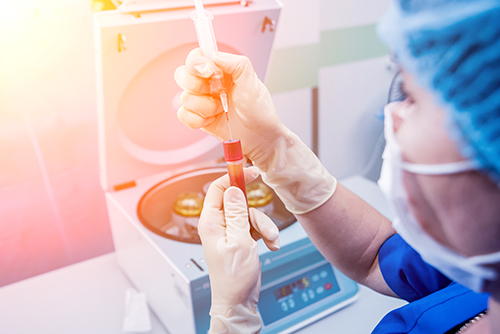Platelet-rich plasma (PRP) first emerged in the 1970s as a treatment to replenish platelets for patients with low counts. Since the 1980s, it has gained a toehold in regenerative medicine, with its proponents claiming, from limited research trials, that it might be useful in aiding wound closure, reducing inflammation, and promoting new cell growth.
This has led to increasing utilization, and interest has been growing in its potential efficacy for pain management, treatment of sports injuries, speeding and improving wound healing, and more.
Current discussions in the scientific community about PRP’s potential utility and efficacy are constrained by limitations in existing clinical studies which, along with anecdotes and testimonies, have cast doubt upon claims made by its proponents and opponents alike.
Some PRP champions inappropriately promote it as an FDA-approved treatment, which is not true. While devices to extract and produce PRP are subject to the FDA’s medical device approval pathways, blood products such as PRP are under the purview of the FDA's Center for Biologics Evaluation and Research (CBER), which regulates the use of human cells, tissues, and cell- and tissue-based products. Under the FDA’s approval process for these products, blood products such as PRP are exempt from the FDA's traditional regulatory pathway for new drugs, which often involves animal studies and clinical trials. The governing regulation refers only to safety and practice standards for preparing and handling PRP rather than treatment indications, leaving the actual use of PRP in clinical practice largely unregulated.
For these reasons, any claims involving treatments with PRP should be approached with substantial caution and care.
About PRP
PRP is an autologous product derived from a patient’s own blood. To obtain it, blood is taken from a patient and processed using a centrifuge to separate out the platelets (or thrombocytes) and the plasma. These two are then combined into a concentrated dose which is injected at or into the specified treatment site. The specific concentration and dosage for each case is determined by the treating physician.
The idea behind using PRP is that the plasma-platelet mixture is rich in the growth factors and cytokines which, in theory, could provide a biological boost to the body’s own healing processes, as they are known to promote soft tissue healing, stimulate cell growth, division, and differentiation, reduce inflammation, fight infection, and provide immunity against pathogens. Thus, it is argued, PRP may also be effective in speeding tissue regeneration, treating inflammation, and even possibly slowing cancer growth and metastasis.
Also, because PRP is derived from a patient’s own body, as with other autologous therapies, the risk of adverse reactions, rejections, and other side effects associated with immune responses are substantially reduced. Side effects of PRP are usually locally confined, mild, and transient, although serious risks such as infection, sepsis, nerve injury, and possibly cancer progression could occur on rare occasions.1 To add to PRP’s appeal, there are claims it could even replace certain medications associated with high risks, such as the opioid painkillers used for severe orthopedic pain, reducing the need to rely on such medications.
The relative ease of preparation, the purported benefits, the relative lack of side effects, and the increasingly visible touting of PRP in the consumer press, when coupled with the comparatively lax regulatory requirements, has reinforced overuse and even abuse of PRP, consequently leading to challenges in health insurance claims.
Current State of Use
Several indications for treatment with PRP have been studied, but unfortunately, no conclusive evidence has emerged to date to support it as an effective treatment for any conditions. For example:
- Sports-related injuries: Some peer-reviewed studies suggest that PRP is safe and does not cause adverse effects on the treated tissue. However, other studies indicate that real evidence of efficacy is sparse, and these researchers do not recommend using PRP as a treatment use outside of clinical trials.
- Osteoarthritis: Research is currently focused on whether PRP injections may help osteoarthritis of the hip and knee. Some studies indicate they can reduce joint pain and stiffness, but at the same time acknowledge that more research is needed to validate the findings.
- Scarring: There are studies on whether PRP can be a possible adjunct to laser treatments for acne scars, as well as for the treatment of other types of scars and wounds. A literature review in 2018 indicated that while PRP seems promising for treatment of scarring, further research with long-term follow-up is required in order to establish its sustained efficacy and value in the broader realm of scar management.2
- Gynecological: Preliminary limited studies have suggested that endometrial treatment with PRP may be helpful to patients undergoing assisted reproductive treatments to reduce proinflammatory gene expression in endometrial cells and improve endometrial proliferation. Case studies have also indicated successful pregnancies after PRP infusions. However, there is not enough data yet to advise routine use of this therapy.3
- Baldness: In a recent three-month research trial, 45 men experiencing male pattern baldness for at least two years were randomly assigned to groups receiving a monthly intralesional injection of autologous PRP, triamcinolone acetonide, or placebo. Although PRP was found to be the most effective of the three for inducing hair regrowth in this small study, additional studies will be needed to validate this finding.4
PRP vs. Other Treatments
There are also studies assessing PRP’s efficacy in combination with other treatments for wound healing or for management of physical pain. Again, the studies have not conclusively shown PRP to have greater efficacy than conventional treatments.
Examples:
- PRP and hyaluronic acid (HA): Studies comparing the efficacy of each for treatment of knee osteoarthritis, injected separately as well as both injected together, have determined that each treatment by itself is efficacious, but neither is superior.5 One 2020 study, which compared patients who received HA and PRP injections together with those receiving HA injections only, found greater improvement with the two injections. However, a second 2020 study, which compared PRP plus HA with either PRP or HA alone, did not yield data showing any difference in results.6
- Wound dressing vs. PRP injection: A study on healing of the surgical wound from pilonidal cyst removal surgery showed PRP injections facilitated faster healing than the standard wound dressings. However, this was a limited study with a relatively small sample.7
- Chronic Achilles tendon pain: Although several studies have shown PRP injections improve healing rates of Achilles tendon injuries compared to conventional treatment, a 2020 systematic review concluded that its efficacy is still inconclusive.8
- Rotator cuff injury: One study showed PRP to be an effective nonsurgical treatment, with greater benefits in range of motion than with corticosteroids in a three-month follow-up.9 However, the sample size of the study was small and the follow-up period relatively short.
These examples demonstrate some of the limitations in clinical studies, which is complicating the fundamental discussion of whether PRP treatment is based on robust evidence or experimental, and so should only be given in the setting of clinical trials, at least for now.
Claims assessors will need to pay particular attention to PRP claims, ideally with input from their medical team.
Claims Considerations
Although research activities to date have not yet been conclusive about PRP’s efficacy, insurance claims for PRP treatment are becoming more common, including but not limited to the following uses:
- Sports medicine, for speeding healing of muscle and tendon injuries
- Bone grafts and fractures
- Connective tissue repair
- Wound healing, for cardiac surgeries, caesarian sections, hysterectomies, and burns
- Female stress urinary incontinence
As the cost of a single PRP treatment is relatively low (ranging from US$500 to up to US$2,500, depending on the country), claims might be accepted and paid without proper evaluation of the treatment being claimed, mainly because the narrative surrounding PRP use has been confusing. The impact of paying for unproven and often unnecessary PRP treatments can be significant, given that it may be provided to large numbers of people suffering from the aforementioned ailments. Furthermore, PRP treatment often does not stop at one episode, and thus there may be a few claims seen from a single claimant in a year.
At this writing, given the absence of robust, peer-reviewed, quality clinical studies and research conclusively indicating its superiority to other treatment modalities, PRP does not meet the standard of “Medically Necessary” as defined in most insurance policies.
Some insurers also have an exclusion for experimental treatment, which specifies that treatment not yet proven to be effective, or at least more effective than conventional standard of care, is to be excluded from policy benefits. PRP treatments would fall into this category based on the current state of evidence.
Medically Necessary
To establish that PRP treatment meets the requirement of being medically necessary and is not an experimental treatment, the following is expected:
- That it must be shown to improve net health outcomes
- That it must be shown to be as beneficial as, if not better than, any of the current established treatment options
- That any improvement in outcomes is attributable to the treatment and must be attainable outside of an investigational setting
The most straightforward way of determining the above is when there are already established international guidelines and recommendations provided by expert bodies, clinical colleges, or societies. For example, in the case of orthopedic indications, the International Society of Orthopedic Surgery and Traumatology (SICOT) reached a consensus following a vigorous literature review process that determined the current level of evidence on PRP efficacy is inconclusive.10
In the absence of such guidelines, when faced with any unfamiliar treatment or potential experimental treatment, claims assessors should take care in reviewing the validity of such treatment, ideally enlisting the assistance of the medical team, if available, to ensure that claims are being paid in accordance to instead of against the policy wordings.
Bottom Line
Given the level of interest and activity surrounding PRP, it may eventually emerge as an appropriate treatment option for certain conditions. For now, however, its efficacy is still being investigated and so it is therefore considered, for claims assessment purposes, to be experimental.
In the future, if efficacy does become conclusively established and independently vetted and validated by the appropriate authorities, it could become a treatment that is routinely covered by health insurance policies. Until then, due caution should be exercised when a claim for PRP is received.



